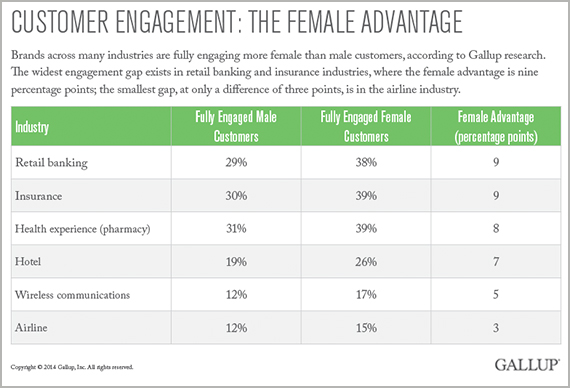Women expect clear and caring interactions whether they're making purchases online or dealing with in-store personnel.
This article is featured in "Women and the Workplace," a weeklong series exploring a variety of issues affecting modern working women.
It is accepted wisdom that when it comes to romantic relationships, men are from Mars and women are from Venus. As consumers, men and women also seem to live on separate planets.
In the U.S., women control 85% of all consumer purchases, from food, clothing, and automobiles to healthcare, home improvement products, and consumer electronics, according to MediaPost. They account for $7 trillion in consumer and business spending, and over the next decade, women will control two-thirds of consumer wealth.
Women wield formidable purchasing power, and marketers and advertisers have acknowledged this by creating countless campaigns and promotions targeting them. But business isn't won or lost by a commercial: The customer experience is what brings people back or turns them away forever.
Brands across many industries are fully engaging more female customers than male customers, according to Gallup research. The engagement gap between female and male customers is widest in the retail banking and insurance sectors, by nine percentage points. Though the airline industry has the smallest engagement gap, at only a difference of three points, the female advantage is still significant.

The Path to Customer Engagement Differs for Men and Women
The ideal customer experience is different for women than it is for men, according to Gallup analyses across various industries. In their customer interactions, men appear to be most interested in efficiency and convenience, while women prefer communication and care:
- In the wireless communications industry, for instance, male customers want service providers to make it easy to do business with them. Female customers, in contrast, want providers to fully explain the phone features to help them pick the right phone and want sales associates to show that they really care about helping to address their customers' issue or problem.
- In the insurance industry, both men and women want an insurance carrier that makes them feel like a valued customer. But male and female customers also have unique needs: Men value insurers that do things right the first time, while women want insurers to make them feel welcome.
When it comes to the buying experience, men and women have different expectations: Men want to get the job done quickly and accurately through simple and straightforward transactions; women expect clear and caring interactions whether they're making purchases online or dealing with in-store personnel. This difference may be the result of biology. According to research from Nielsen NeuroFocus, the female brain is hardwired to receive and respond to messages differently than the male brain. Women remember more and take in more details than men do. Also, women are more likely to base decisions on their gut instincts and pay attention to social and verbal cues. Women approach buying as a social activity and want to maintain social harmony, so they respond best to positive comparisons and messaging.
Higher Engagement Equals Higher Return
On average, female customers are more fully engaged with specific brands -- and thus are more profitable customers -- than are their male counterparts. And fully engaged customers are more loyal and profitable than average customers in good and bad economic times. Across various industries and countries, customer engagement consistently predicts key business outcomes, including profitability and share of wallet. Gallup's latest research shows that fully engaged customers -- those with the strongest rational and emotional connections to a particular brand -- deliver a 24% premium on these key outcomes, while actively disengaged customers represent a 19% discount on these measures. Simply put, when customers believe they are getting more from a business, they give more of their business to it.
Women are now -- and will continue to be -- the most powerful U.S. spenders. Companies must pay special attention to the customer experience women want and create strategies that maximize it. Companies shouldn't create scripts for interacting with their female customers; instead, they should create an environment that meets female customers' rational and emotional needs. Women want to understand the details of their transactions, and they appreciate salespeople who take the time to give them thorough explanations. Most importantly, women want to feel that the companies they do business with care about them and value them as customers.

